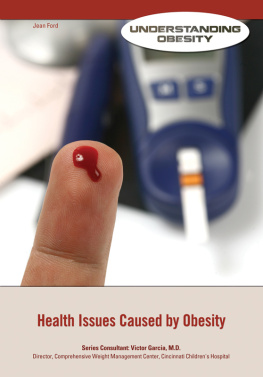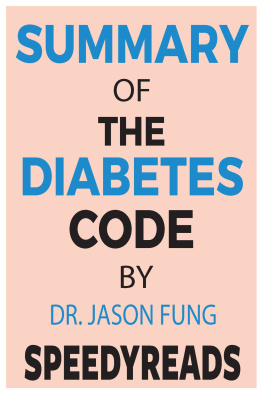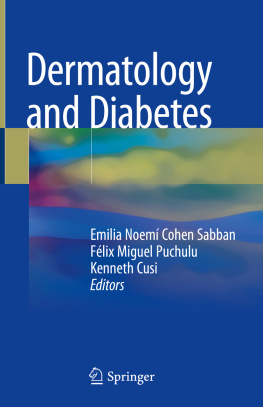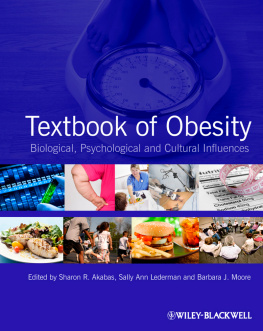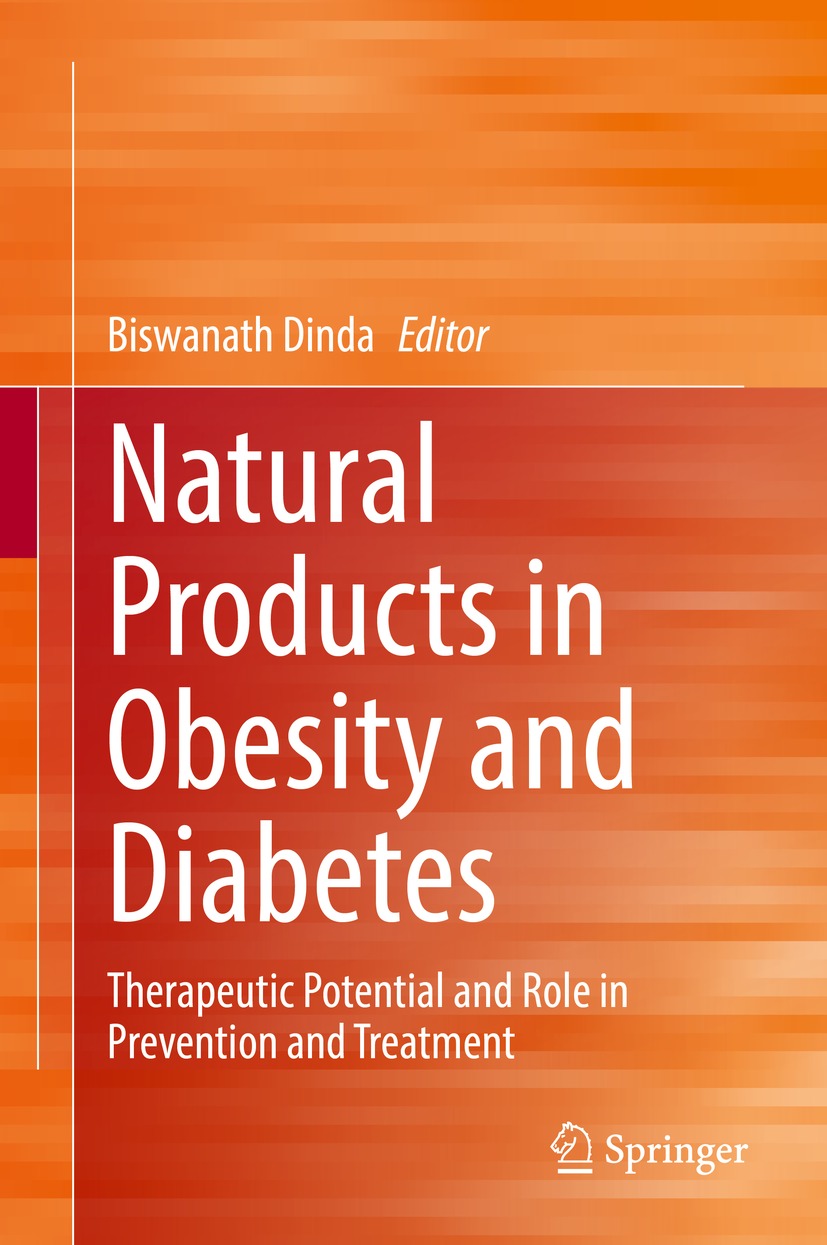Natural Products in Obesity and Diabetes
Therapeutic Potential and Role in Prevention and Treatment

Logo of the publisher
Editor
Biswanath Dinda
Department of Chemistry, Tripura University, Agartala, Tripura, India
ISBN 978-3-030-92195-8 e-ISBN 978-3-030-92196-5
https://doi.org/10.1007/978-3-030-92196-5
The Editor(s) (if applicable) and The Author(s), under exclusive license to Springer Nature Switzerland AG 2022
This work is subject to copyright. All rights are solely and exclusively licensed by the Publisher, whether the whole or part of the material is concerned, specifically the rights of translation, reprinting, reuse of illustrations, recitation, broadcasting, reproduction on microfilms or in any other physical way, and transmission or information storage and retrieval, electronic adaptation, computer software, or by similar or dissimilar methodology now known or hereafter developed.
The use of general descriptive names, registered names, trademarks, service marks, etc. in this publication does not imply, even in the absence of a specific statement, that such names are exempt from the relevant protective laws and regulations and therefore free for general use.
The publisher, the authors and the editors are safe to assume that the advice and information in this book are believed to be true and accurate at the date of publication. Neither the publisher nor the authors or the editors give a warranty, expressed or implied, with respect to the material contained herein or for any errors or omissions that may have been made. The publisher remains neutral with regard to jurisdictional claims in published maps and institutional affiliations.
This Springer imprint is published by the registered company Springer Nature Switzerland AG
The registered company address is: Gewerbestrasse 11, 6330 Cham, Switzerland
This book is dedicated to the people suffering from obesity and diabetes and the medical professionals who look after them.
The editor also dedicates this book to Late Mrs. Chitralekha Dinda, wife of Biswanath Dinda, who lost her life in this corona pandemic, and whose constant sacrifice and encouragement helped the editor to finish the book.
Preface
The field of natural products science is immense, fascinating, and interesting because of structural diversity, versatile biological activities, and occurrence of natural molecules from various sources, as well as the specific metabolic origin, fate, and cellular biotransformation of these phytogenic compounds. These natural metabolites have defensive roles against harmful pathogens and environmental stress to protect parent organisms under various environments. Various herbal extracts have been used in the treatment of different diseases and ailments since the stone-age period. In many countries, these natural products have been used in their traditional folk medicine based on ethnobotanical knowledge. Various polyherbal formulations have been found to have potential efficacy in the treatment of obesity and diabetes. Most of these polyherbal formulations have poor scientific data on the composition and contents of bioactive phytochemicals and the mode of action in the treatment of diseases. As a result, the practitioners have no idea of the effective doses and treatment period of these phytomedicines. Most of currently prescribed synthetic oral drugs for the treatment of obesity and diabetes and their associated complications on their long-term use by the patients caused many adverse side effects. For this reason, most of leading pharmaceutical industries and research institutes have paid attention to the discovery of natural drugs as an alternative to currently used synthetic drugs. Recently, only a few natural and semi-natural molecules are in the global market for the treatment of these diseases. The major shortcomings of natural drugs in clinical trials in humans and in treatment are the lack of scientific data on the effective doses and the composition and contents of active phytochemicals and their active metabolites in disease-specific organs in humans, in addition to the requisite dose for a patient to cure the disease. Recently introduced omics technologies have been applied to evaluate the effective doses as personalized medicine for the treatment of the present global pandemic of obesity and diabetes.
The contributors of this monograph have highlighted the various aspects of natural products, particularly the impact of multi-omics biotechnology, gut microbiota dysbiosis, and cultivation and harvesting factors of plants and dietary vegetables and fruits on the composition and concentrations of anti-obese and antidiabetic phytochemicals present in them. Moreover, the contributors have elaborately discussed the different aspects of many natural molecules having potential anti-obesity and antidiabetic activities, such as their major therapeutic targets, pharmacokinetics, metabolism, nanoformulations benefits and clinical progress. It will help for extensive studies of these natural molecules on toxicity and efficacy in future in human mimic animal models and humans and for large-scale application in global market as safe and low-cost drugs. In spite of sincere efforts for the publication of this monograph in correct form, any printing and other errors in this edition due to overlooking are regretted.
I hope this monograph will be useful for the practitioners in the field of traditional folk medicine, growers of fruits, vegetables, and crops, and students and researchers in the field of natural science and pharmaceutical chemistry.
I will appreciate valuable suggestions and comments from the readers of this book for its improvement in the next edition.
I am grateful to the publishers for their kind support and interest in the publication of this monograph. I am also grateful to Prof. A Basak, University of Ottawa, Canada, and Prof. G. H. Maity, Jadavpur University, India, for their kind help in providing some articles in the preparation of the manuscript of this monograph.
I wish to express my heartfelt thanks to all the contributors of this book including editorial and technical management staff for their sincere efforts in this endeavor.
Biswanath Dinda
Agartala, Tripura, India
October, 2021
Abbreviations
ABCG5
ATP-binding cassette subfamily G member 5 protein
ACADM
Acyl-Coenzyme A dehydrogenase medium chain (C-4 to C-12)
ACADS
Acyl-CoA dehydrogenase short-chain
ACAT1
Acetoacetyl-CoA thiolase 1
ACC1
Acetyl-CoA carboxylase 1
ACE
Angiotensin-converting enzyme
Acly
ATP-citrate lyase
ACO
Acyl CoA oxidase
ACS
Acyl-CoA synthetase
ACSL3
Acyl-CoA synthetase long-chain family member 3
AgRP
Agouti-related protein
Akt
Protein kinase B
ALT
Alanine transaminase
AMPK
5-Adenosine monophosphate (AMP)-activated protein kinase
Ang II
Angiotensin II
ANP
Atrial natriuretic peptide
AP-1
Activator protein-1
aP2
Adipocyte protein 2
ApoE
Apolipoprotein E
AS-160
Akt substrate of 160 kDa protein
AST
Aspartate transaminase
ATF4
Activating transcription factor 4


